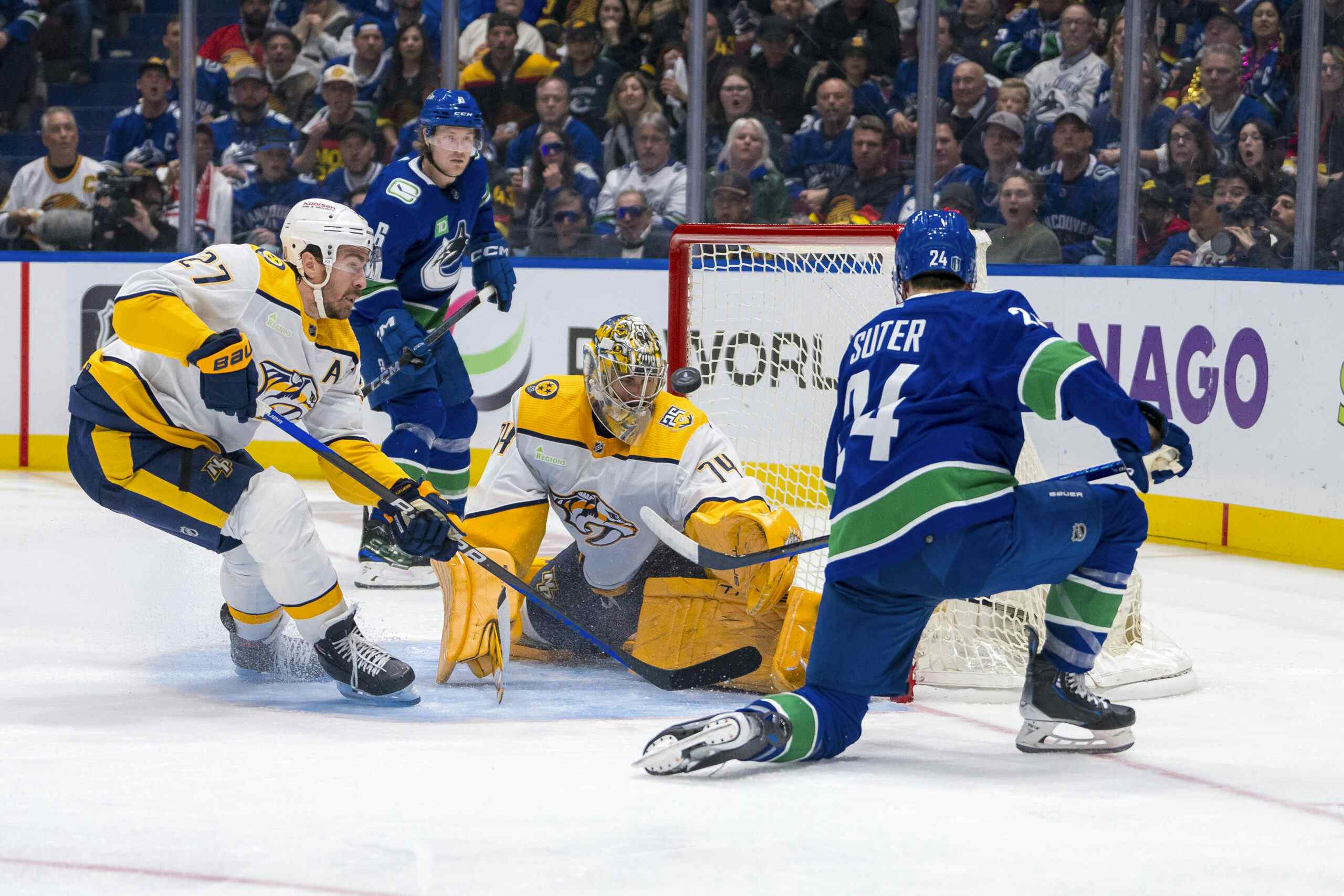Alain Vigneault’s Coin isn’t Funny, But the Jokes Serve a Purpose

There were many revealing moments during Roberto Luongo’s bangarang appearance on CBC’s After Hours on Saturday night, immediately following the Canucks’ five-one victory over the Flames. Luongo was in fine form cracking several wicked jokes, name dropping Smylosphere staples like the Stanchion and generating thousands of pageviews for indie blogs like this one by calling Scott Oake a "milt" on national television.
But one moment particularly stood out to me. During the interview, while the cameras were rolling live, Canucks headcoach Alain Vigneault approached the Roberto Luongo, Craig Simpson, Scott Oake threesome and made an off camera quip at his "backup" goaltender. According to Luongo, Vigneault told him to sing his coaches praises if he had any interesting in receiving playing time going forward. It was a light moment, and yet another instance of Alain Vigneault having altogether too much fun with his goaltending controversy and the breathless coverage of Vancouver’s crowded crease.
Read on past the jump for more.
Over the past few weeks, Alain Vigneault’s "coin" that he jokes he uses to select his starting goaltender for any given game, has been given an awful lot of run. The coin even has its own Twitter account, so you know it’s a Big Deal. This attention of course is the entire point of the joke, and very probably the reason the Canucks’ bench boss has gone to the well again and again, telling his coin joke with the ruthlessness of Javier Bardem’s air-pressure assassin in No Country for Old Men.
Obviously when Vigneault decided to start Roberto Luongo (ostensibly the team’s backup) for four games in a row last week, it wasn’t just an example of Poisson distribution. Vigneault is calling the shots, riding the point thief when he has too, and his double-sided coin is just a ruse or, perhaps, a coping strategy.
Consider that over the past few years the Canucks as a team have exhibited a regular tendency to playfully mess with the media. I’d hypothesize it’s partly a way of deflecting pressure in one of the highest pressure markets in hockey. Whether it’s Kesler-bombing interviews, sneaking "Milk Hot Dog" into chats with the press, embarrassing reporters by pretending to be other players on the team, or answering questions about what the Canucks need to adjust mid-game to come away with the by quoting LMFAO – having a bit of fun at the media’s expense is something of a habit for this club, and has been for a while. Alain Vigneault’s coin takes this concept to its furthest extent, but I’d argue it’s the culmination of a natural trend.
I’d further suggest to you that the headcoach is taking a page out of @strombone1‘s book, and using self-deprecating humour as a method of dealing with a difficult situation. Discomfort is often the necessity that preceeds the invention of a joke, after all. It helps that Vigneault’s two star goaltenders are joining in too, with Cory Schneider comparing himself to Conan O’Brien after a practice in which Roberto Luongo was named the starter for the next game, and Luongo making coin jokes during the Super Bowl telecast. When it comes to the goaltending controversy, al of the principles are comedians.
The joke accomplishes a couple of things, I think. It allows Alain Vigneault to deflect attention away from his goaltenders, both of whom are professionals and good teammates but would probably rather start nearly every game for two different clubs at this point. It also allows him to avoid the questions altogether. The second part might be important because, when it comes to putting his foot in his mouth while talking to the press, Alain Vigneault is something of a high-event defenseman. Think of Alain Vigneault as Kevin Bieksa, and the coin as Dan Hamhuis – it helps him limit his mistakes.
While the coin joke is already old (and likely to continue to get beaten like a rented mule for as long as the goaltending conundrum in Vancouver’s net continues), I have to credit Vigneault and his goaltenders for finding a reasonably healthy and somewhat amusing outlet with which to innocuously handle this awkward circumstance. I’m not laughing at the coin anymore, as a joke it’s not all that funny, but I find I have some respect for it. Viewed as a symbolic type of slogan that helps preserve camaraderie while keeping prying questions from the press at a distance, it makes an awful lot of sense.
Recent articles from Thomas Drance





